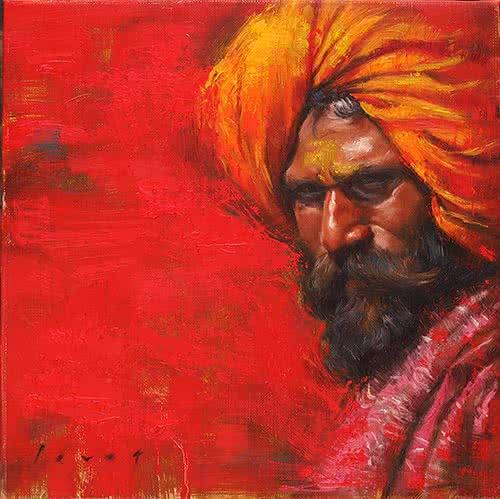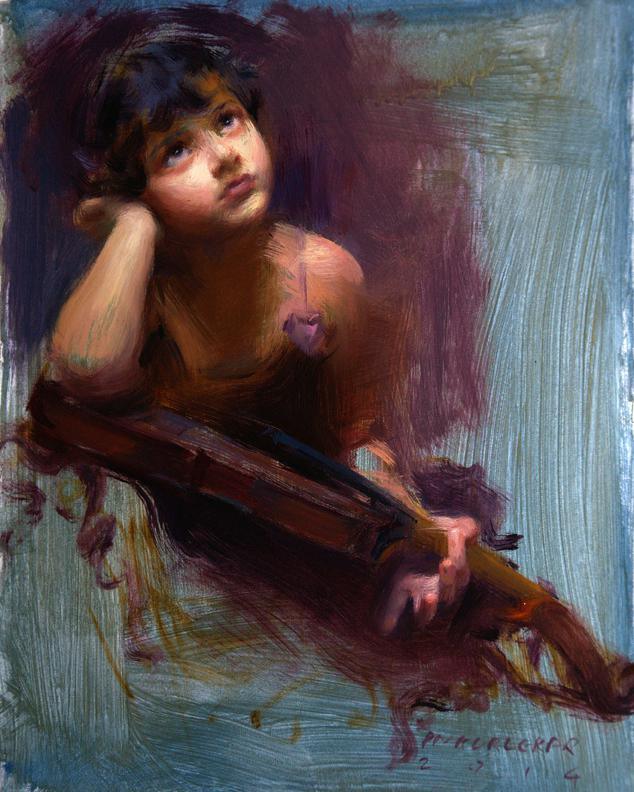Exploring Iconic Artists and Their Impacts on Figurative Oil Painting
Exploring Iconic Artists and Their Impacts on Figurative Oil Painting
Blog Article
The Evolution of Figurative Oil Painting: Understanding Its Historical Value and Modern Interpretations
The development of metaphorical oil painting acts as an engaging lens where to examine the interaction in between creative expression and historic context. From the meticulous naturalism of the Renaissance to the emotive power of the Baroque, each age has added layers of significance and strategy to this timeless tool. Contemporary musicians, attracting from this abundant heritage, are currently reinterpreting the human figure in manner ins which test conventional narratives. As we check out these improvements, one should take into consideration just how the dialogue between past and existing informs not just creative technique however additionally societal reflections in a significantly complicated globe.
Beginnings of Figurative Oil Paint
The origins of metaphorical oil paint can be mapped back to the early Renaissance in Europe, especially in the 15th century. This period noted a considerable departure from the level representations and stiff forms particular of middle ages art. Artists started to explore naturalism, stressing the human number and its psychological expression. The development of oil paint enabled better deepness of shade and information, improving the realistic look and vibrancy of their job.

In this transformative period, figures were usually shown within contextually abundant settings, showcasing not only their physical characteristics but also their mental states. Leaders such as Jan van Eyck and Titian harnessed the tool's adaptability, utilizing layering techniques to attain luminance and texture. This advancement helped with the representation of complex fabrics and the nuances of skin tones, adding to the development of portrait and narrative scenes.
Additionally, the Renaissance focus on humanism promoted a gratitude for distinctiveness, which subsequently influenced artists to create more relatable and dynamic figures - figurative oil painting. Consequently, metaphorical oil painting became a powerful automobile for storytelling and psychological engagement, preparing for future creative movements and designs
Trick Historic Activities
Significant historical activities have actually formed the evolution of metaphorical oil paint, each adding special approaches and strategies that expanded the medium's opportunities. The Renaissance noted a turning point, stressing realism and the human kind, with musicians like Leonardo da Vinci and Michelangelo pushing the borders of physiological accuracy and viewpoint. Following this, the Baroque era brought remarkable contrasts of light and darkness, exemplified by Caravaggio, that infused religious motifs with intense emotionality.
The 19th century presented Romanticism and Realism, where musicians such as Delacroix and Courbet challenged classic ideals, concentrating on private expression and daily life. The advent of Impressionism additionally changed the medium by stressing the results of light and color, bring about a departure from traditional depiction.
In the early 20th century, movements like Expressionism and Cubism redefined metaphorical painting via abstraction and the exploration of psychological deepness. Each of these motions not only showed the social changes of their times however likewise laid the groundwork for modern interpretations. The interplay between these historic movements has developed a rich tapestry of designs and ideologies, affecting modern musicians in their pursuit of recording the human experience on canvas.
Techniques and Materials Advancement

Throughout the Baroque period, methods such as chiaroscuro and sfumato arised, boosting the emotional vibration of metaphorical structures. Artists began to trying out lusters and impasto, adjusting structure and luminance. By the 19th century, technologies like the usage of pre-mixed paints in tubes transformed ease of access, permitting musicians to repaint en plein air and catch the short lived effects of light.
The 20th century observed the introduction of synthetic pigments and mediums, which expanded the combination and modified the consistency of oil paints. Moreover, the expedition of brand-new application methods, such as combination knives and brushes of differing stiffness, additional varied imaginative expression. Collectively, these improvements reflect the advancing connection between materials, techniques, and the imaginative vision integral in metaphorical oil paint.

Contemporary Interpretations
Contemporary interpretations of figurative oil painting mirror a vibrant dialogue in between practice and innovation, where artists test developed standards and check out varied styles. This evolution shows up in different ways, as modern musicians mix timeless methods with contemporary ideas, frequently addressing social, political, and personal stories.
Lots of specialists draw motivation from hop over to here historical jobs, yet they instill their items with modern point of views, making use of the human type as a car for discourse on culture, gender, and identity. Artists progressively try out abstraction, distortion, and multimedias, which enables for a more comprehensive interpretation of the number and its context.
Furthermore, using brilliant shade schemes and unusual make-ups frequently offers to interrupt typical checking out experiences, provoking critical engagement from audiences. This shift in emphasis prolongs past visual appeals; it shows a growing understanding of the intricacies of human experience in an interconnected globe.
As figurative oil paint remains to progress, it continues to be a vital medium for discovering the nuances of modern life, embodying both a respect for heritage and a commitment to modern idea. The outcome is an abundant tapestry of expression that reverberates with the complexities of the modern human condition.
Influence On Modern Art
The influence of metaphorical oil paint on modern art is extensive, as it has continuously influenced a myriad of imaginative movements and practices throughout the 21st and 20th centuries. From Expressionism to Surrealism and beyond, the exploration of the human number has stayed a central style, permitting musicians to share complex feelings and narratives. This emphasis on metaphorical depiction has actually resulted in a re-examination of conventional techniques, causing innovative methods that mix realistic look with abstraction.
In addition, modern musicians have accepted figurative oil painting as a method to attend to political and social concerns, making use of the medium to challenge perceptions of identification, gender, and society. The rebirth of passion in metaphorical operate in current years reflects a hoping for connection in an increasingly electronic world, where human experience and feeling are vital.
In addition, the dialogue in between metaphorical oil painting and modern-day art appears in the works of musicians such as Kehinde Wiley and Jenny Saville, who attract on historical recommendations while infusing their items with contemporary relevance. Eventually, figurative oil paint proceeds to form and redefine modern imaginative expression, emphasizing its long-lasting importance in the art world.
Conclusion
The evolution of figurative oil painting highlights its historical relevance and adaptability across various imaginative activities. Ultimately, figurative oil painting continues to be a vital tool for discovering the human experience, resonating exceptionally in today's electronic landscape.
The development of figurative oil painting offers as a compelling lens through which to examine the interaction between artistic expression and historic context.Significant historic activities have actually shaped the evolution of metaphorical oil painting, each contributing one-of-a-kind approaches and methods that broadened the medium's possibilities.As historical activities shaped the trajectory of figurative oil paint, the materials and methods used navigate to these guys by artists have actually additionally undergone considerable changes. figurative oil painting.The effect of figurative oil paint on contemporary art is extensive, as it has consistently inspired a myriad of imaginative movements and techniques throughout the 20th and 21st centuries.The evolution of figurative oil painting underscores its historic significance and versatility throughout different artistic movements
Report this page